Family: Siricidae
Subfamily: Siricinae
Genus: Sirex Linnaeus, 1760
Species: Sirex cyaneus Fabricius, 1781
Common names: blue horntail
Sirex cyaneus is a northeastern NearcticNearctic:
describing the region of the Northern Hemisphere that includes North America south through northern Mexico
 species with a typical metallic blue-black coloration and red legs (Schiff et al. 2012Schiff et al. 2012:
species with a typical metallic blue-black coloration and red legs (Schiff et al. 2012Schiff et al. 2012:
Schiff NM, Goulet H, Smith DR, Boudreault C, Wilson AD, and Scheffler BE. 2012. Siricidae (Hymenoptera: Symphyta: Siricoidea) of the Western Hemisphere. Canadian Journal of Arthropod Identification 21: 1-305.).
The European species previously identified as S. cyaneus has, through morphological and molecular analysis, been determined to be a separate species, and is now classified as S. torvus. The species previously identified as S. juvencus in North America has been re-classified as S. cyaneus (Schiff et al. 2012Schiff et al. 2012:
Schiff NM, Goulet H, Smith DR, Boudreault C, Wilson AD, and Scheffler BE. 2012. Siricidae (Hymenoptera: Symphyta: Siricoidea) of the Western Hemisphere. Canadian Journal of Arthropod Identification 21: 1-305.).
See Sirex for genus-level diagnostic characteristics.
Females:
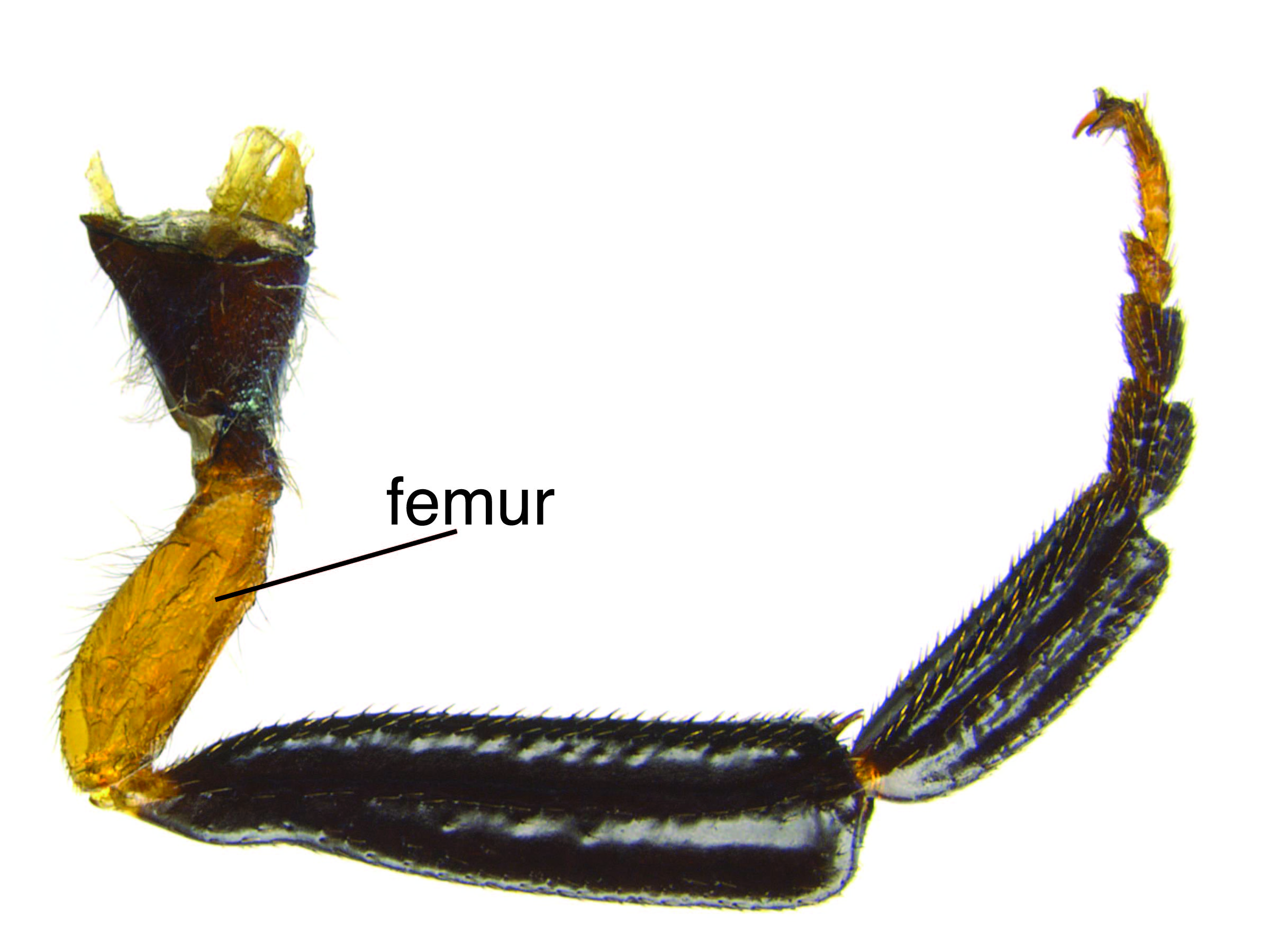 reddish-brown (Schiff et al. 2012Schiff et al. 2012:
reddish-brown (Schiff et al. 2012Schiff et al. 2012: metallic blue-black (Schiff et al. 2012Schiff et al. 2012:
metallic blue-black (Schiff et al. 2012Schiff et al. 2012: light reddish-brown (Schiff et al. 2012Schiff et al. 2012:
light reddish-brown (Schiff et al. 2012Schiff et al. 2012: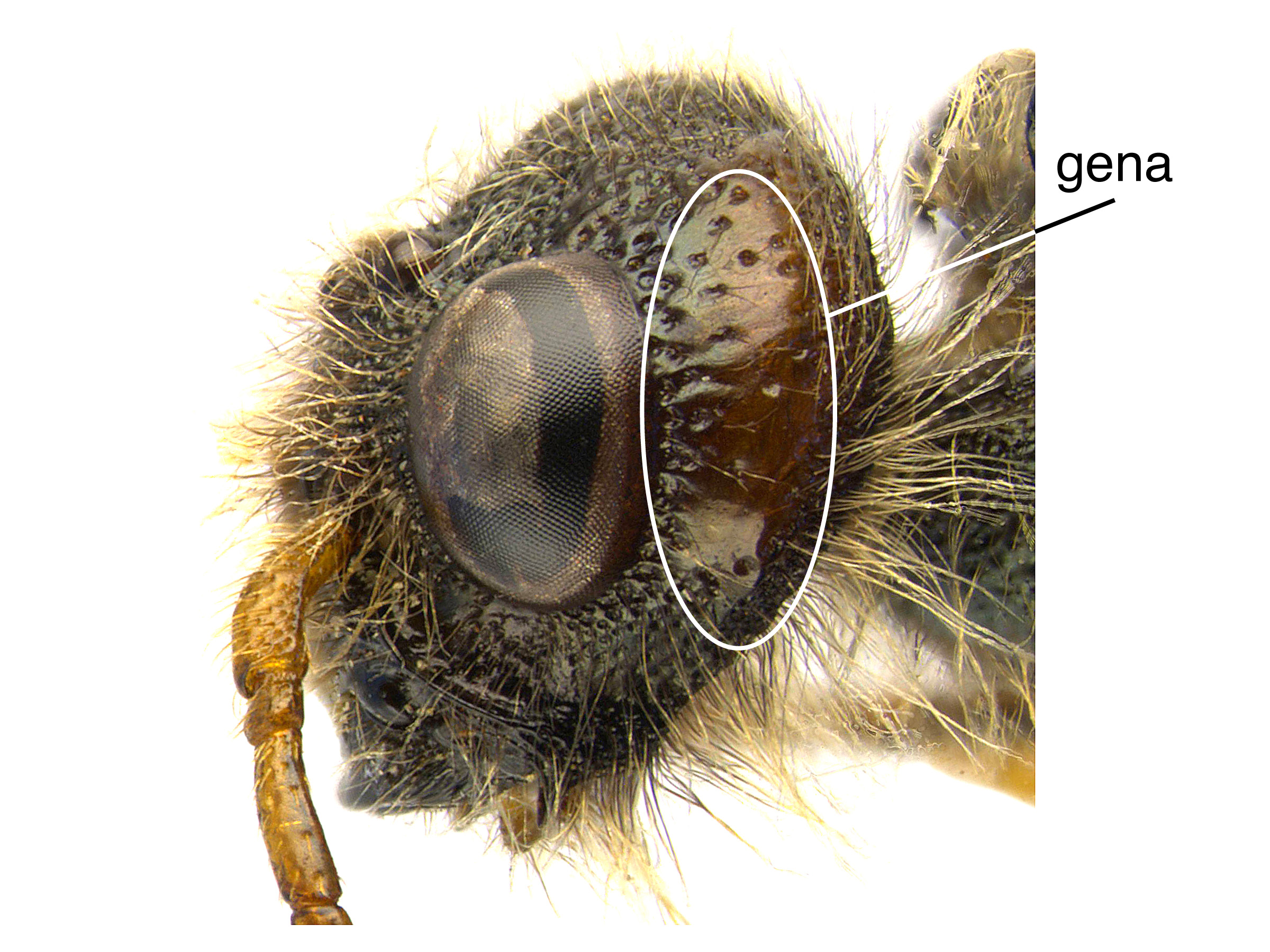 small, about 0.1-0.25 times size of laterallateral:
small, about 0.1-0.25 times size of laterallateral: scattered, about 2–10 pit diameters apart (Schiff et al. 2012Schiff et al. 2012:
scattered, about 2–10 pit diameters apart (Schiff et al. 2012Schiff et al. 2012: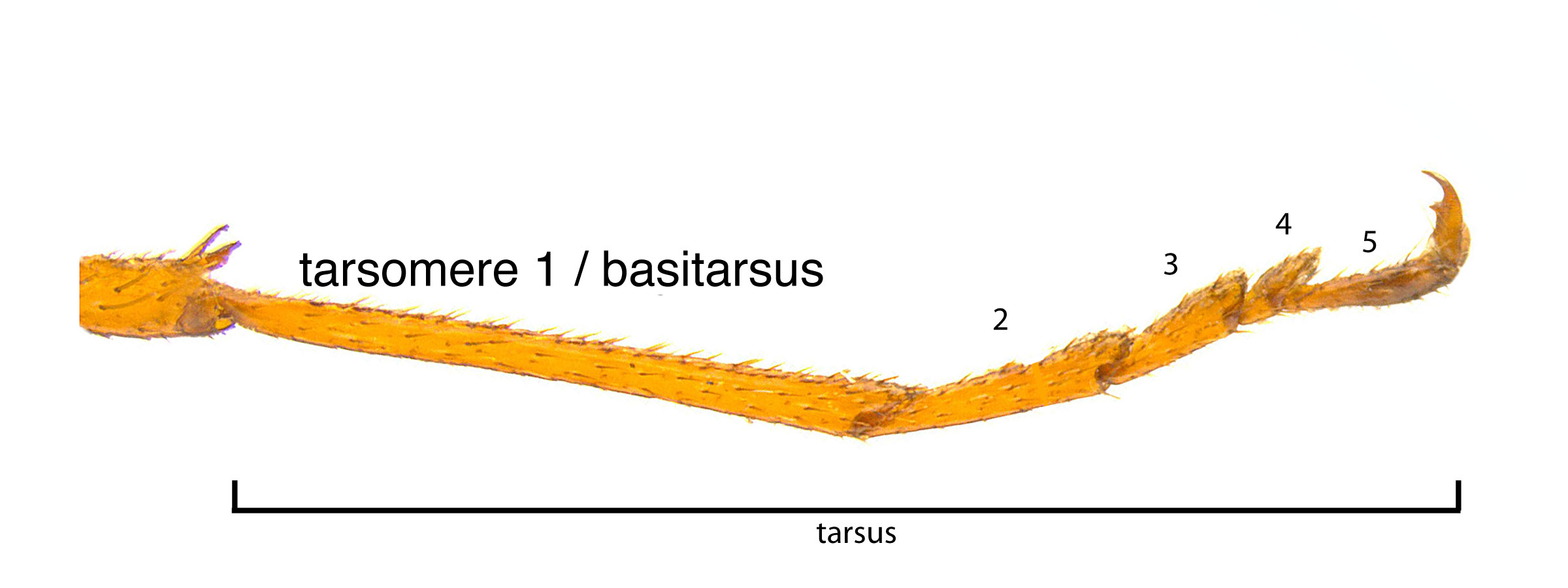 2–3.6 times as long as wide (Schiff et al. 2012Schiff et al. 2012:
2–3.6 times as long as wide (Schiff et al. 2012Schiff et al. 2012: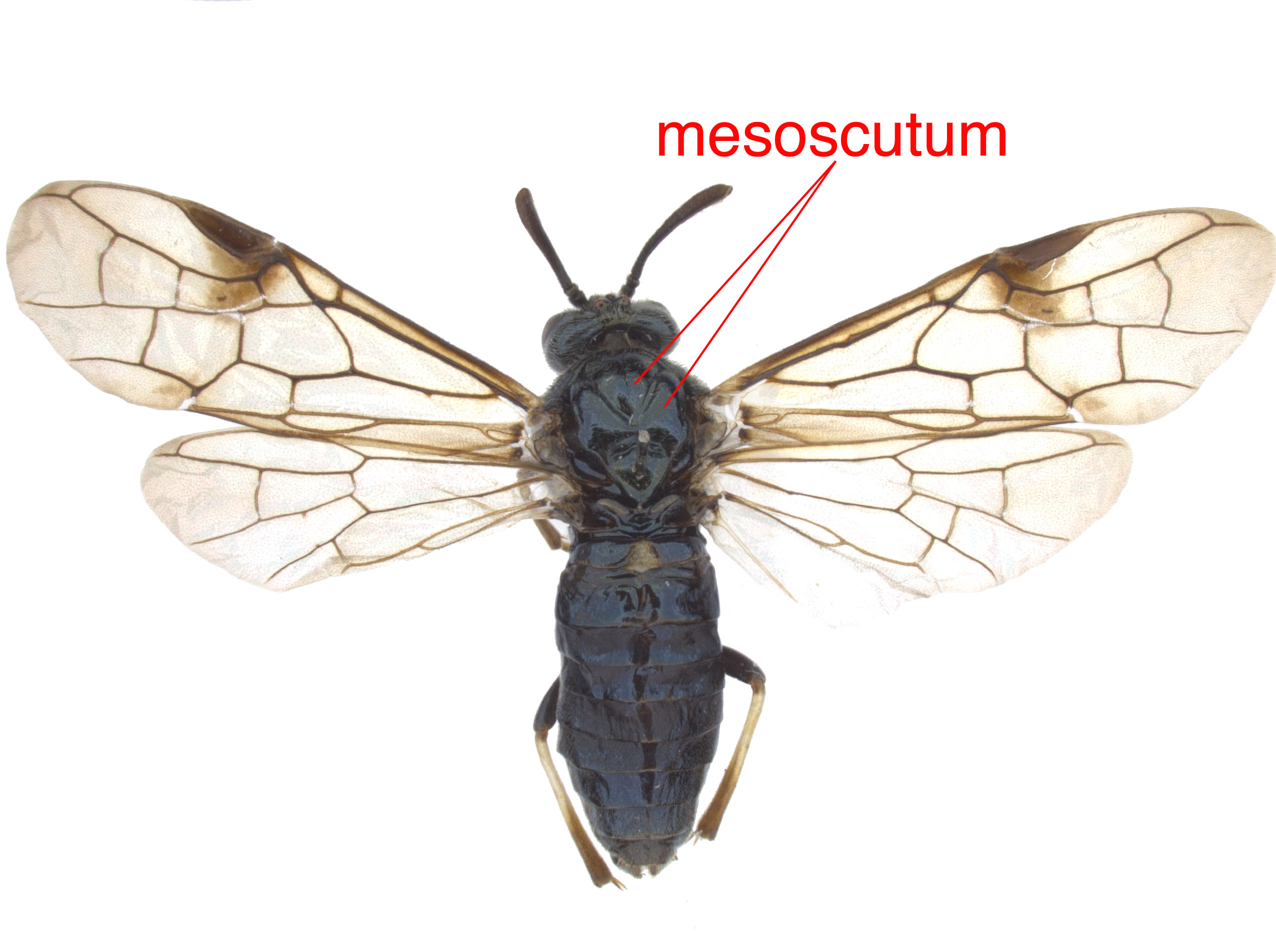 pits with raised margins forming a net-like pattern (Schiff et al. 2012Schiff et al. 2012:
pits with raised margins forming a net-like pattern (Schiff et al. 2012Schiff et al. 2012: with pulvilluspulvillus:
with pulvilluspulvillus: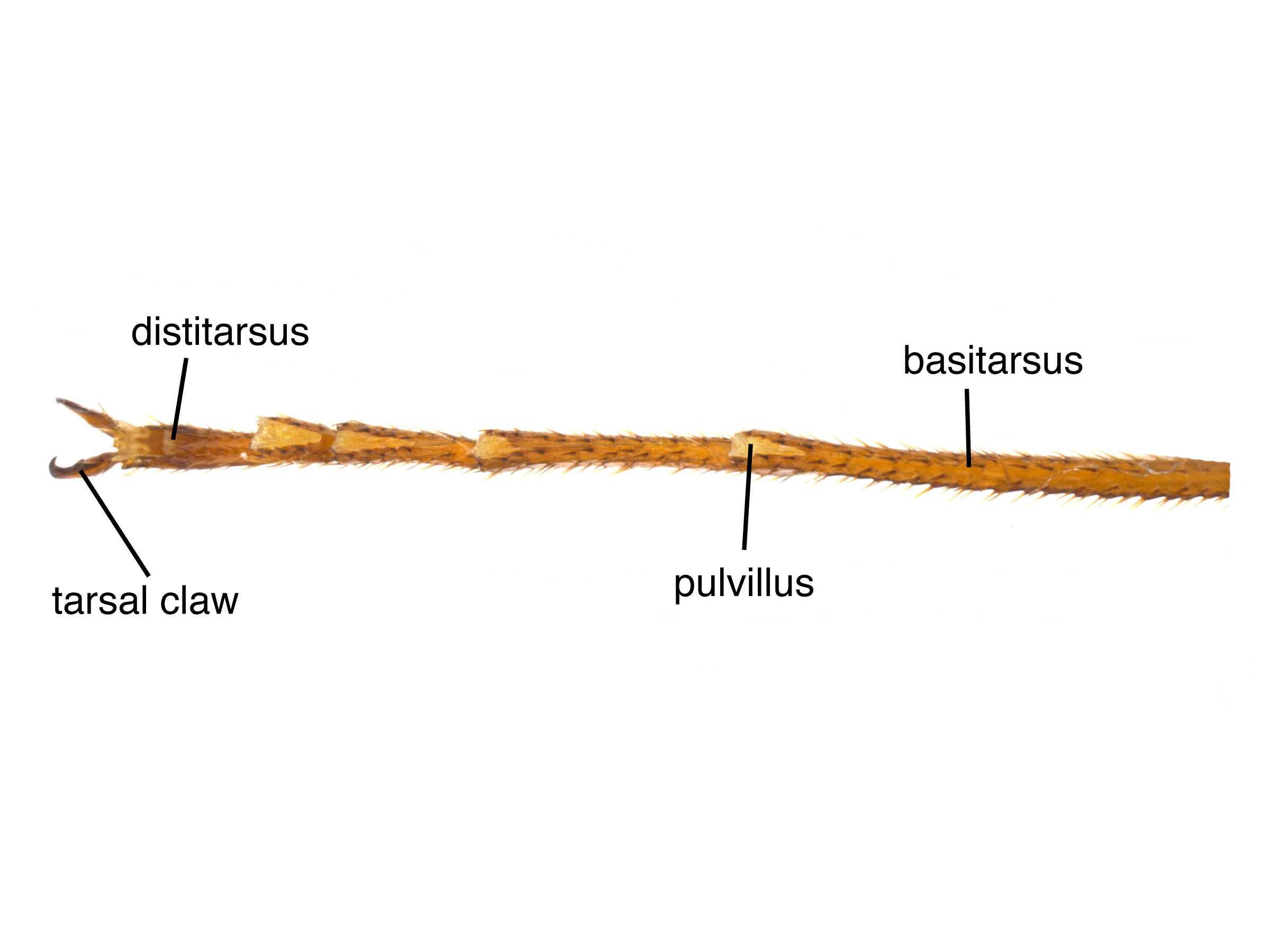 0.8 times length of tarsomeretarsomere:
0.8 times length of tarsomeretarsomere: (Schiff et al. 2012Schiff et al. 2012:
(Schiff et al. 2012Schiff et al. 2012: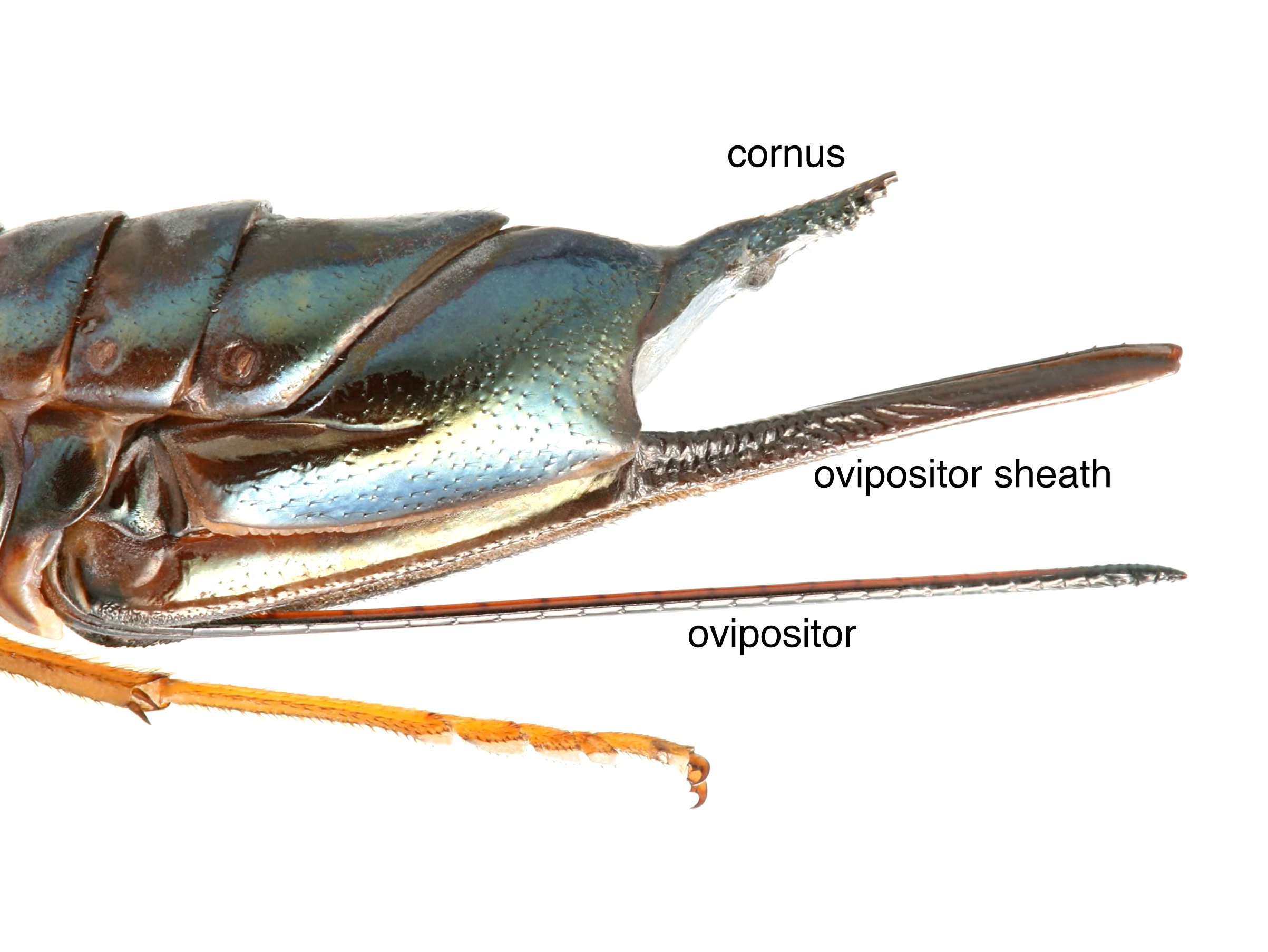 without pits or pits difficult-to-see on the basalbasal:
without pits or pits difficult-to-see on the basalbasal:Males:
 completely reddish-brown (Schiff et al. 2012Schiff et al. 2012:
completely reddish-brown (Schiff et al. 2012Schiff et al. 2012: dark blue with metallic reflections (Schiff et al. 2012Schiff et al. 2012:
dark blue with metallic reflections (Schiff et al. 2012Schiff et al. 2012: usually with narrow band of reddish brown at basebase:
usually with narrow band of reddish brown at basebase: pits with projections, margins forming a net-like pattern (Schiff et al. 2012Schiff et al. 2012:
pits with projections, margins forming a net-like pattern (Schiff et al. 2012Schiff et al. 2012: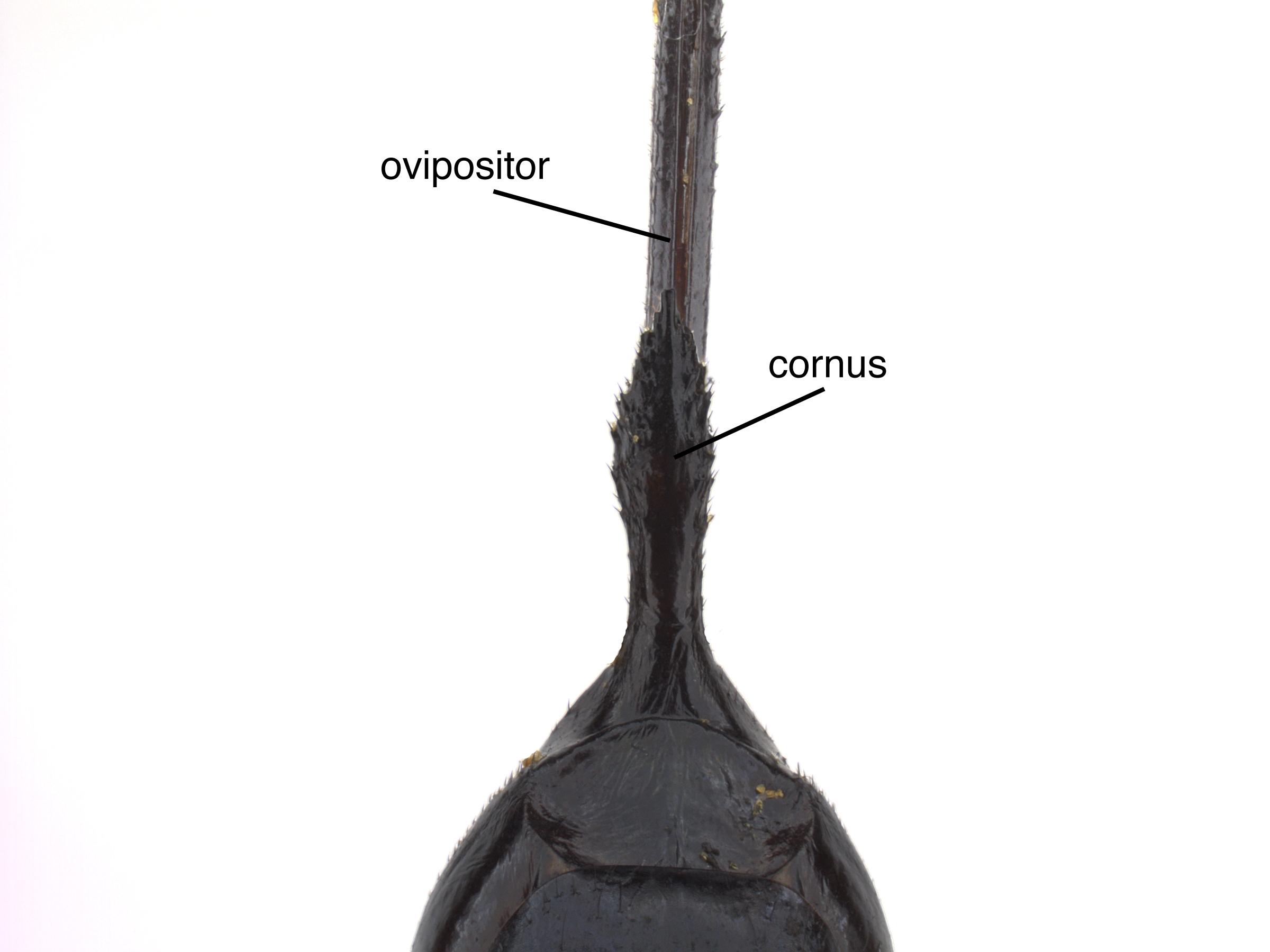 also black (Schiff et al. 2012Schiff et al. 2012:
also black (Schiff et al. 2012Schiff et al. 2012: pits generally 1–3 diameters apart posterodorsallyposterodorsal:
pits generally 1–3 diameters apart posterodorsallyposterodorsal:In its native range, Sirex cyaneus can be confused with S. nitidus and S. noctilio. The most reliable character distinguishing S. cyaneus from these species is the absence (or near absence) of pits near the basebase:
the beginning or most proximal area of any structure
of the ovipositorovipositor:
the female organ that deposits eggs and is used to drill into plant tissue, located at the apex of the abdomen, made up of the lance and lancet
 . The European species S. torvus and S. juvencus can also be distinguished by this ovipositorovipositor:
. The European species S. torvus and S. juvencus can also be distinguished by this ovipositorovipositor:
the female organ that deposits eggs and is used to drill into plant tissue, located at the apex of the abdomen, made up of the lance and lancet
 pit character. Sirex abietinus is another similar species that occurs west of the Rocky Mountains, and it is distinguished by the cornuscornus:
pit character. Sirex abietinus is another similar species that occurs west of the Rocky Mountains, and it is distinguished by the cornuscornus:
a pointed horn-like process on the apical end of the abdomen in Siricidae sawflies; on tergite 10 in females, sternite 9 in males
 length (Schiff et al. 2012Schiff et al. 2012:
length (Schiff et al. 2012Schiff et al. 2012:
Schiff NM, Goulet H, Smith DR, Boudreault C, Wilson AD, and Scheffler BE. 2012. Siricidae (Hymenoptera: Symphyta: Siricoidea) of the Western Hemisphere. Canadian Journal of Arthropod Identification 21: 1-305.).
none recorded
Sirex species feed on trees of Pinaceae and Cupressaceae. Sirex cyaneus is recorded on species of Pinaceae: Abies balsamea (balsam fir), Abies fraseri (Fraser fir), Abies sp., Larix sp., Picea glauca (white spruce), Picea mariana (black spruce), Pinus strobus (eastern white pine), and Pinus elliottii (slash pine). The majority of specimens reared (99%) have been on Abies spp. (spruce) (Schiff et al. 2012Schiff et al. 2012:
Schiff NM, Goulet H, Smith DR, Boudreault C, Wilson AD, and Scheffler BE. 2012. Siricidae (Hymenoptera: Symphyta: Siricoidea) of the Western Hemisphere. Canadian Journal of Arthropod Identification 21: 1-305.).
Female Sirex harbor symbiotic basidiomycete fungus in abdominal glands called mycangia. During oviposition, the site is inoculated with the fungus, which begins to decompose the surrounding wood. LarvaeLarva:
the immature stage of holometabolous insects
 feed on the fungus, and in the process bore galleries through the wood (Johnson 1930Johnson 1930:
feed on the fungus, and in the process bore galleries through the wood (Johnson 1930Johnson 1930:
Johnson CW. 1930. On the variation and abundance of Sirex nitidus Harris. Psyche 37 (3): 281-282. https://doi.org/10.1155/1930/62786, Schiff et al. 2012Schiff et al. 2012:
Schiff NM, Goulet H, Smith DR, Boudreault C, Wilson AD, and Scheffler BE. 2012. Siricidae (Hymenoptera: Symphyta: Siricoidea) of the Western Hemisphere. Canadian Journal of Arthropod Identification 21: 1-305.). The mycangia of S. cyaneus individuals harbor Amylostereum chailletii fungus (Hajek et al. 2013Hajek et al. 2013:
Hajek AE, Nielsen C, Kepler RM, Long SJ, and Castrillo L. 2013. Fidelity among Sirex woodwasps and their fungal symbionts. Microbial Ecology 65: 753-762. https://doi.org/10.1007/s00248-013-0218-z).
Larvae are creamy white and grub-like in appearance with a dark head capsule. As with adults, larvaelarva:
the immature stage of holometabolous insects
 possess a short dorsaldorsal:
possess a short dorsaldorsal:
of or on the top surface of the body or structure
horn on the posterior end of the body. The larvaelarva:
the immature stage of holometabolous insects
 bore galleries into wood, feeding until pupation and subsequent emergence. Throughout this process, the larvaelarva:
bore galleries into wood, feeding until pupation and subsequent emergence. Throughout this process, the larvaelarva:
the immature stage of holometabolous insects
 use their horn to pack the tunnel behind them with sawdust. Emergence holes are perfectly circular. The fungal symbiont is carried in specialized organs in female larvaelarva:
use their horn to pack the tunnel behind them with sawdust. Emergence holes are perfectly circular. The fungal symbiont is carried in specialized organs in female larvaelarva:
the immature stage of holometabolous insects
 that develop into the mycangia after metamorphosis (Schiff et al. 2012Schiff et al. 2012:
that develop into the mycangia after metamorphosis (Schiff et al. 2012Schiff et al. 2012:
Schiff NM, Goulet H, Smith DR, Boudreault C, Wilson AD, and Scheffler BE. 2012. Siricidae (Hymenoptera: Symphyta: Siricoidea) of the Western Hemisphere. Canadian Journal of Arthropod Identification 21: 1-305.).
The documented flight period of S. cyaneus is early July through early September, with most collections in early August (Schiff et al. 2012Schiff et al. 2012:
Schiff NM, Goulet H, Smith DR, Boudreault C, Wilson AD, and Scheffler BE. 2012. Siricidae (Hymenoptera: Symphyta: Siricoidea) of the Western Hemisphere. Canadian Journal of Arthropod Identification 21: 1-305.). There is some evidence that trees with sustained damage, either from drought-related stress, weather, or other insect infestations, are preferred as hosts (Burnip et al. 2010Burnip et al. 2010:
Burnip GM, Voice D, and Brockerhoff EG. 2010. Interceptions and incursions of exotic Sirex species and other siricids (Hymenoptera: Siricidae). New Zealand Journal of Forestry Science 40: 133-140.).
Several parasitoid wasp species have been reared from S. cyaneus specimens: Ibalia leucospoides, Ibali rufipes, Rhyssa howdenorum, Rhyssa lineola and Rhyssa persuasoria (Schiff et al. 2012Schiff et al. 2012:
Schiff NM, Goulet H, Smith DR, Boudreault C, Wilson AD, and Scheffler BE. 2012. Siricidae (Hymenoptera: Symphyta: Siricoidea) of the Western Hemisphere. Canadian Journal of Arthropod Identification 21: 1-305.).
World: North America. Several interceptions have been made in New Zealand (Schiff et al. 2012Schiff et al. 2012:
Schiff NM, Goulet H, Smith DR, Boudreault C, Wilson AD, and Scheffler BE. 2012. Siricidae (Hymenoptera: Symphyta: Siricoidea) of the Western Hemisphere. Canadian Journal of Arthropod Identification 21: 1-305.).
North America: The range of S. cyaneus extends from Alberta to Newfoundland in the north, south to Arizona in the west, and south to North Carolina in the east (Schiff et al. 2012Schiff et al. 2012:
Schiff NM, Goulet H, Smith DR, Boudreault C, Wilson AD, and Scheffler BE. 2012. Siricidae (Hymenoptera: Symphyta: Siricoidea) of the Western Hemisphere. Canadian Journal of Arthropod Identification 21: 1-305.).
Map data from: GBIF.org (26 June 2019) GBIF Occurrence Download Sirex cyaneus
Details about data used for maps can be found here.